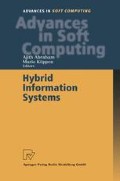Abstract
This paper discusses a hybrid technique for detecting and tracking moving pedestrians in a video sequence. The technique comprises two sub-systems: an active contour model for detecting and tracking moving objects in the visual field, and an MLP neural network for classifying the moving objects being tracked as ‘human’ or ‘nonhuman’. The axis crossover vector method is used for translating the active contour into a scale-. location-, resolution- and rotation-invariant vector suited for input to a neural network, and we identify the most appropriate level of detail for encoding human shape information. Experiments measuring the neural network’s accuracy at classifying unseen computer generated and real moving objects are presented, along with potential applications of the technology. Previous work has accommodated lateral pedestrian movement across the visual field; this paper describes a system which accommodates arbitrary angles of pedestrian movement on the ground plane.
Access this chapter
Tax calculation will be finalised at checkout
Purchases are for personal use only
Preview
Unable to display preview. Download preview PDF.
References
Hayfron-Acquah JB, Nixon MS & Carter JN (2001). Automatic Gait Recognition via the Generalised Symmetry Operator. In Proceedings of the BMVA Workshop on Understanding Visual Behaviour, Jan 24th 2001.
Shimida N, Shirai Y & Kuno Y [2000]. Model adaptation and posture estimation of moving articulated object using monocular camera. In Proceedings of the First International Workshop, Articulated Motion and Deformable Objects, Mallorca, September 2000, pp. 158–172.
Blake A & Isard M (1998). Active Contours. Springer-Verlag.
Kass M, Witkin A & Terzopoulos D (1988). Snakes: active contour models. In International Journal of Computer Vision ( 1988 ), pp. 321–331.
Williams DJ & Shah M (1992). A fast algorithm for active contours and curvature estimation. In CVGIP-Image Understanding 55, pp. 14–26.
Tabb K & George S (1998). Snakes and their influence on visual processing. Internal Technical Report, Department of Computer Science, University of Hertfordshire.
Sonka M, Hlavac V & Boyle R (1994). Image Processing, Analysis and Machine Vision. Chapman & Hall.
Tabb K, Davey N, George S & Adams R (1999). Detecting partial occlusion of humans using snakes and neural networks. In Proceedings of the 5th International Conference on Engineering Applications of Neural Networks, 13–15 September 1999, Warsaw, pp. 34–39.
Cootes TF, Taylor CJ, Cooper DH & Graham J (1992). Training models of shape from sets of examples. In Proceedings of the British Machine Vision Conference 1992, pp. 918.
Magee DR & Boyle RD (2000). Spatio-temporal modeling in the farmyard domain. In Proceedings of the First International Workshop, Articulated Motion and Deformable Objects, Mallorca, September 2000, pp. 83–95.
Tabb K, Davey N, Adams R & George S (2001). The recognition and analysis of animate objects using neural networks and active contour models. In Neurocomputing, Special edition on Engineering Applications of Neural Networks [in press].
Author information
Authors and Affiliations
Editor information
Editors and Affiliations
Rights and permissions
Copyright information
© 2002 Springer-Verlag Berlin Heidelberg
About this paper
Cite this paper
Tabb, K., Davey, N., Adams, R., George, S. (2002). A Hybrid Detection and Classification System for Human Motion Analysis. In: Abraham, A., Köppen, M. (eds) Hybrid Information Systems. Advances in Soft Computing, vol 14. Physica, Heidelberg. https://doi.org/10.1007/978-3-7908-1782-9_11
Download citation
DOI: https://doi.org/10.1007/978-3-7908-1782-9_11
Publisher Name: Physica, Heidelberg
Print ISBN: 978-3-7908-1480-4
Online ISBN: 978-3-7908-1782-9
eBook Packages: Springer Book Archive

